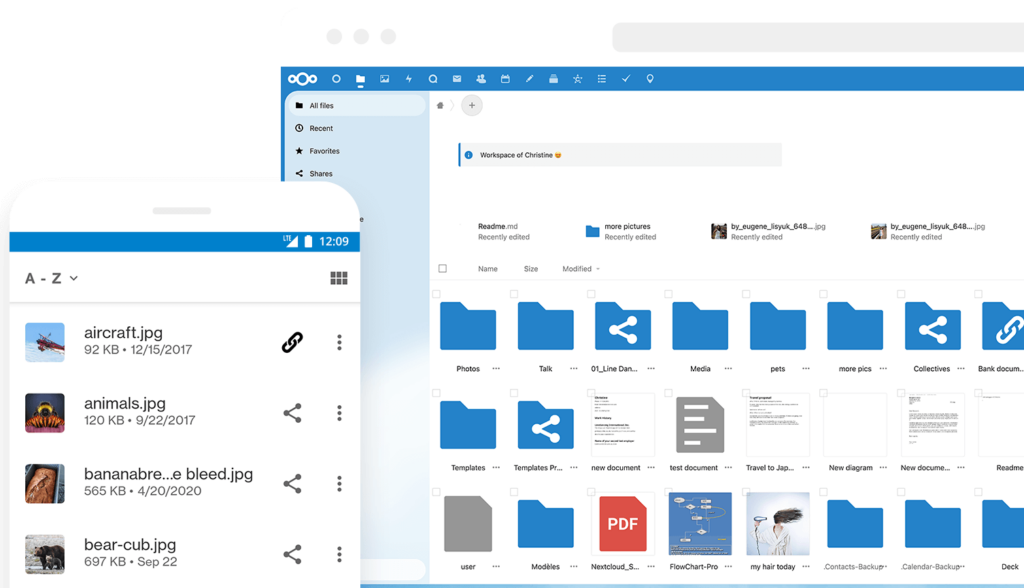The Rise of Open Source Alternatives in the Software World
In the ever-evolving landscape of technology, a fascinating trend has emerged: for every proprietary software solution, an open source counterpart seems to materialize. This phenomenon reflects a fundamental principle of balance in the tech ecosystem, reminiscent of the ancient Chinese concept of yin and yang. Just as every action has an equal and opposite reaction, the world of software development has witnessed the rise of open source alternatives to challenge the dominance of proprietary tools.

The Growing Importance of “Openness” in Technology
Recent years have seen the concept of “openness” in technology thrust into the spotlight like never before. The gradual decline of Twitter, once a titan of social media, has prompted millions of users to explore alternative platforms, many of which are built on open source foundations. This mass migration has not only demonstrated the power of open source solutions but also highlighted the growing demand for transparency and user control in digital spaces.
The controversy surrounding OpenAI in the previous year further intensified discussions about the meaning and implications of “open source” in the context of artificial intelligence. As AI continues to reshape industries and societies, the debate over openness versus proprietary control has taken on new dimensions, with far-reaching consequences for innovation, ethics, and accessibility.
Open Source vs Closed Source
The appeal of open source software extends far beyond mere novelty. For years, the tech-savvy have turned to open alternatives for a variety of compelling reasons:
- Transparency and Security: Open source code can be scrutinized by anyone, potentially leading to faster identification and resolution of security vulnerabilities.
- Customizability: Users with the necessary skills can modify open source software to suit their specific needs, a level of flexibility rarely offered by proprietary solutions.
- Freedom from Vendor Lock-in: Open source tools often use standard file formats and protocols, making it easier to switch between different software solutions without losing data or functionality.
- Community-Driven Development: Many open source projects benefit from the collective expertise of a global community of developers, leading to rapid innovation and improvement.
- Cost-Effectiveness: While not always free, open source software often comes with lower upfront costs and more flexible licensing terms compared to proprietary alternatives.
Challenges and Considerations
Despite these advantages, open source software is not without its challenges. Potential drawbacks include:
- Limited Formal Support: Some open source projects may lack the comprehensive customer support infrastructure offered by large commercial software vendors.
- Feature Gaps: In some cases, open source alternatives may not offer all the advanced features found in their proprietary counterparts.
- Technical Complexity: Deploying and maintaining certain open source solutions may require a higher level of technical expertise compared to more user-friendly commercial options.
- Sustainability Concerns: Some open source projects struggle to maintain long-term development and support, especially if they lack a sustainable funding model.
Despite these challenges, the open source movement continues to gain momentum, offering viable alternatives across a wide range of software categories.
Open Source Alternatives to Popular Productivity Apps
Let’s explore some noteworthy open source alternatives to commonly used productivity tools:
1. WeShop UI – Alternatives to PhotoShop, Figma, StableDiffusion Web-UI

In the wake of Adobe‘s ultimately unsuccessful $20 billion bid for Figma, WeShop UI emerged as a compelling open source alternative in the design and prototyping space. This web-based tool caters to individual designers and enterprises alike, offering a free usage to suit different needs.
WeShop UI is an open-source solution derived from WeShop.AI, which specializes in generating images using AI. WeShop UI has extracted some business/professional functionalities, removed proprietary elements, and is gradually releasing parts of services to the public. The goal is to foster innovation and collaboration in AI-powered image creation while maintaining core business offerings. WeShop UI features multi-task management, and a simple and user-friendly interface, perfect for beginners.
2. Cal.com: Revolutionizing Scheduling

While Calendly has long dominated the scheduling platform market, valued at an impressive $3 billion, Cal.com has emerged as a formidable open source challenger. Branded as “scheduling infrastructure for absolutely everyone,” Cal.com offers both self-hosted and SaaS options, catering to a wide range of users and organizations.
3. Screenity: Streamlining Screen Recording

The rapid shift to remote work during the global pandemic highlighted the importance of asynchronous communication tools. While Loom capitalized on this trend, eventually being acquired by Atlassian for nearly $1 billion, open source alternatives like Screenity have emerged to offer similar functionality without the corporate overhead.
Currently limited to the Chrome browser, Screenity provides a glimpse into the potential for open source solutions in the screen recording and sharing space.
4. Jitsi: Empowering Video Conferencing

As Zoom rose to prominence during the work-from-home era, Jitsi offered a fully self-hostable and configurable video-conferencing alternative. This community-driven project, started by Emil Ivov in 2003, demonstrates the longevity and adaptability of open source initiatives.
While Jitsi remains open source and free for anyone to deploy, its parent company, 8×8, offers paid services with enhanced features, showcasing a hybrid model that balances openness with commercial viability.
5. Nextcloud: Redefining Cloud Storage

In the realm of cloud storage, Nextcloud stands out as a versatile, open source solution challenging industry incumbents like Dropbox. Offering both client-side and server-side components, Nextcloud empowers users to take control of their data storage infrastructure.
With options for self-hosting or using third-party providers, Nextcloud caters to a diverse user base, from individual enthusiasts to large enterprises prioritizing privacy, security, and data sovereignty.
6. Ghost: Transforming Digital Publishing

As platforms like Substack and Medium have created closed ecosystems for digital publishing, Ghost offers an open source alternative that prioritizes writer autonomy and flexibility. Developed by former WordPress engineer John O’Nolan in 2013, Ghost provides a streamlined publishing platform with both self-hosted and managed options.
7. TabbyML: Democratizing AI-Assisted Coding
The rise of AI-powered coding assistants like GitHub Copilot has revolutionized the software development process. However, the closed nature of these tools has left room for open source alternatives. Enter TabbyML, aims to provide a self-hostable, open source alternative to GitHub Copilot.
8. Chatwoot: Reimagining Customer Support

In the customer relationship management space, Chatwoot emerges as an open source challenger to industry giant Zendesk. By offering a self-hostable platform, Chatwoot allows businesses to maintain complete control over their customer engagement data and infrastructure.
This approach resonates with organizations prioritizing data privacy and customization in their customer support operations.
9. PhotoPrism: Innovating Photo Management

As Google Photos ended its free unlimited tier in 2020, PhotoPrism stepped in to offer an open source alternative for photo management and backup. Developed by a Berlin-based team, PhotoPrism supports a wide range of deployment options, from personal desktops to network-attached storage devices.
With features like duplicate detection and facial recognition, PhotoPrism demonstrates that open source solutions can compete with proprietary offerings in terms of functionality and user experience.
10. Bitwarden: Securing Password Management

In the critical domain of password management, Bitwarden has distinguished itself by adopting an open source model. Competing with established players like LastPass, Dashlane, 1Password and Psono. While Bitwarden’s core components are fully open source, the company maintains certain features under a “source available” license, striking a balance between openness and commercial viability. If you prefer premium options, Cybernews regularly lists verified 1Password coupon codes that can help you save while accessing advanced password management features.
11. AppFlowy: Challenging Collaborative Workspaces
As an open source alternative to the $10 billion workplace productivity tool Notion, AppFlowy offers a self-hostable solution for project management, note-taking, and collaboration. AppFlowy exemplifies the potential for open source tools to disrupt established players in the productivity space.
12. Dub.co: Innovating Link Management

In the realm of URL shortening and management, Dub.co has emerged as an open source challenger to industry stalwart Bitly. By providing features like time-series data and branded links alongside the option for complete control through self-hosting, Dub.co showcases the versatility and adaptability of open source business models.
The Future of Open Source in Productivity Software
The proliferation of open source alternatives across various software categories signals a shift in the technology landscape. Nonetheless, for organizations prioritizing seamless client interactions and comprehensive project oversight, leveraging good client portals offered by established project management solutions can provide added value. As users and organizations become increasingly conscious of data privacy, vendor lock-in, and the need for customizable solutions, open source tools are likely to play an even more significant role in shaping the future of productivity software.
As users and organizations become increasingly conscious of data privacy, vendor lock-in, and the need for customizable solutions, open source tools are likely to play an even more significant role in shaping the future of productivity software. For businesses looking to tailor open source solutions to their unique needs, custom software development can bridge the gap by enhancing functionality, integrating specific features, and ensuring seamless compatibility with existing systems. Collaborating with a software outsourcing company can further streamline this process by providing the technical expertise and scalability needed to maximize the potential of open source solutions.
Key trends to watch in the open source productivity space include:
- Increased Enterprise Adoption: As open source solutions mature and offer enterprise-grade features, more large organizations may opt for these alternatives to reduce costs and increase flexibility.
- Integration of AI and Machine Learning: Open source projects are likely to incorporate advanced AI capabilities, challenging proprietary tools in areas like predictive analytics and automation. We’re already seeing early AI agent examples emerging in open source tools that automate tasks and assist in decision-making across design, development, and customer support.
- Enhanced Collaboration Features: With remote and hybrid work becoming the norm, open source productivity tools will likely focus on improving real-time collaboration and asynchronous communication features.
- Improved User Experience: As competition intensifies, open source alternatives will need to match or exceed the user-friendly interfaces of their proprietary counterparts to gain widespread adoption.
- Sustainable Funding Models: The success of open source projects will depend on developing sustainable funding mechanisms that balance openness with financial viability.
Find the Right AI Tools with Insidr.AI
Insidr.ai is a dynamic platform designed to empower businesses by harnessing the transformative capabilities of artificial intelligence. Positioned as an ultimate AI playground, Insidr.ai offers a comprehensive directory of over 500 AI tools, catering to a variety of business needs. The platform not only provides access to these tools but also offers services aimed at enhancing business operations through AI integration. Additionally, Insidr.ai serves as an educational hub, equipping users with the knowledge and skills necessary to navigate the evolving landscape of AI technology. With a commitment to making AI accessible and beneficial, Insidr.ai invites users to embark on their AI journey and unlock new possibilities for growth and innovation.
Conclusion
The rise of open source alternatives in the productivity software space represents a significant shift in the technology landscape. By offering transparency, customizability, and freedom from vendor lock-in, these tools are challenging the dominance of proprietary solutions and reshaping user expectations.
While challenges remain, the success of projects like WeShop UI, Cal.com, and Bitwarden demonstrates the viability and potential of open source models in creating robust, feature-rich productivity tools. As the movement continues to gain momentum, we can expect to see even more innovative open source alternatives emerging across various software categories.
Ultimately, the competition between open source and proprietary solutions is likely to drive innovation, improve security, and offer users a wider range of choices in how they manage their digital workflows. Whether you’re an individual looking for more control over your tools or an enterprise seeking flexible, customizable solutions, the world of open source productivity software offers a wealth of options worth exploring.


